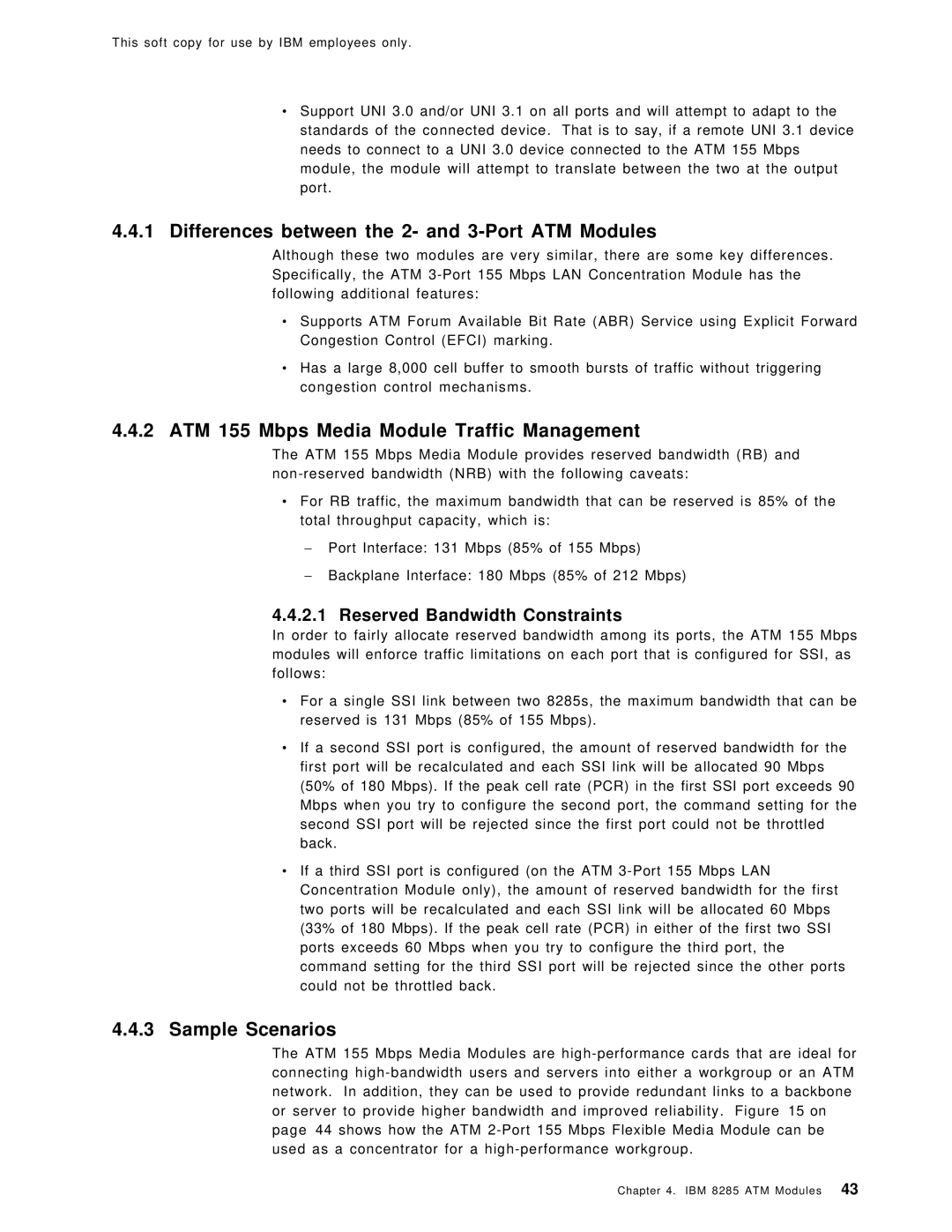This soft copy for use by IBM employees only.
•Support UNI 3.0 and/or UNI 3.1 on all ports and will attempt to adapt to the standards of the connected device. That is to say, if a remote UNI 3.1 device needs to connect to a UNI 3.0 device connected to the ATM 155 Mbps module, the module will attempt to translate between the two at the output port.
4.4.1Differences between the 2- and 3-Port ATM Modules
Although these two modules are very similar, there are some key differences. Specifically, the ATM
•Supports ATM Forum Available Bit Rate (ABR) Service using Explicit Forward Congestion Control (EFCI) marking.
•Has a large 8,000 cell buffer to smooth bursts of traffic without triggering congestion control mechanisms.
4.4.2ATM 155 Mbps Media Module Traffic Management
The ATM 155 Mbps Media Module provides reserved bandwidth (RB) and
•For RB traffic, the maximum bandwidth that can be reserved is 85% of the total throughput capacity, which is:
−Port Interface: 131 Mbps (85% of 155 Mbps)
−Backplane Interface: 180 Mbps (85% of 212 Mbps)
4.4.2.1 Reserved Bandwidth Constraints
In order to fairly allocate reserved bandwidth among its ports, the ATM 155 Mbps modules will enforce traffic limitations on each port that is configured for SSI, as follows:
•For a single SSI link between two 8285s, the maximum bandwidth that can be reserved is 131 Mbps (85% of 155 Mbps).
•If a second SSI port is configured, the amount of reserved bandwidth for the first port will be recalculated and each SSI link will be allocated 90 Mbps (50% of 180 Mbps). If the peak cell rate (PCR) in the first SSI port exceeds 90 Mbps when you try to configure the second port, the command setting for the second SSI port will be rejected since the first port could not be throttled back.
•If a third SSI port is configured (on the ATM
4.4.3Sample Scenarios
The ATM 155 Mbps Media Modules are
